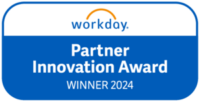In today’s fiercely competitive business landscape, leveraging data for strategic decision-making is critical. Shockingly, only a quarter of businesses currently make fully data-driven decisions, highlighting a glaring gap in leveraging data’s potential. But the proof is in the pudding: data-driven organizations boast 23 times higher customer acquisition rates, six times better customer retention, and are 19 times more likely to be profitable. These insight-driven businesses grow at average of 30% each year – now, imagine that applied to your hiring process, to building a winning talent team that can accelerate your business goals.
While virtually every executive craves a data-driven culture, a mere 32% actually succeed in implementing it. The reason? A stagnant company culture that resists data adoption, resulting in costly hiring missteps. Building a data-driven hiring process requires more than just data, analytics, and metrics; it demands a cultural shift.
Embracing a data-driven hiring approach is multifaceted, but entirely achievable. It begins with cultural transformation, followed by data capture and, ultimately, its application for hiring triumphs. Today, we’re sharing actionable tips to kickstart this journey within your organization!
How to Cultivate a Data-Driven Hiring Culture
Step 1: Secure Leadership Buy-In
Peter Drucker once said, “Culture eats strategy for breakfast.” To ensure your initiative gains traction and full adoption, you must secure leadership buy-in for a top-down approach. Nothing secures compliance like an official mandate from the highest rungs of management.
Step 2: Ensure a Robust Data Infrastructure
One of the most common reasons that companies fail to implement a data-driven culture are inadequate systems for capturing vital data. Alarmingly, more than 80% of companies are making decisions based on stale information, resulting in flawed judgments, revenue loss, and employee frustration, and, ultimately, the abandonment of a data-driven culture.
This is where tools like Rooster come in. Our innovative technology seamlessly integrates with your current recruiting platforms, allowing you to effortlessly set success metrics and gather vital data. Plus, Rooster ensures easy access to essential data for driving transformative change.
Step 3: Educate Your Team for Implementation
Empower your team to lead with a data-first approach by equipping them with data analysis, interpretation, and application skills. Training on data extraction, tracking, and its significance will go a long way in fostering overall adoption and execution.
Step 4: Track (& Celebrate!) Your Successes
Showcase the value of data-driven hiring through tangible outcomes. Ask yourself, “How has data-driven hiring impacted the organization?” In order for it to become a long-term initiative, proof of results must be shared, showcase improvements in processes, enhanced hire quality, and overall efficiency gains through quarterly reports and success stories. It may take a few quarters to be able to gather these metrics, but showing the change in overall efficiency and quality will contribute to long-term buy-in.
How to Deploy Your Metrics for Hiring Success
Once you’ve laid the foundation for data-driven hiring, what happens next? It’s time to move forward and prepare a strategy to deploy your success metrics.
This strategy can be developed by creating a list of areas where you can potentially enhance your hiring process with data and work backwards. Here are a few areas to consider:
- Identify Impact Areas: List areas where data can enhance your recruitment process, like decision-making, efficiency, messaging, goal setting, and budget planning.
- Tailored Metrics: Define the specific data points you need to track for each impact area. For example, track time-to-fill for increased efficiency or platform usage for budget planning.
- Data-Driven Solutions: Use collected data to identify bottlenecks and develop targeted solutions, such as A/B testing emails to optimize candidate experience and engagement, and then analyzing response rates to refine outreach strategies.
The High Cost of Hiring Wrong
Every bad hire stings, but did you know it could cost 30% of an employee’s first-year salary, according to the US Department of Labor? Some HR agencies estimate the true cost even higher, ranging from $240,000 to a staggering $850,000 per employee depending on various factors such as industry, resources, training expenses, and lost productivity.
By leveraging data, you can guide your team towards hiring the right candidates, optimizing efficiency throughout the process and avoid costly mistakes. From accelerated time to hire to improved response rates, there are a number of metrics that will help inform your hiring-decisions.
Read more on how strategic insights can revolutionize your recruitment process here.
Embrace the Power of Data Today
Rooster was designed to help you cultivate a data-driven hiring process, with robust analytics capabilities that provide you with the data you need to make informed hiring decisions. With the data you capture, Rooster helps you eliminate process bottlenecks, gain deeper insights, and enhance overall efficiency and productivity.
Schedule a personalized demo today and discover how Rooster can help you build a data-driven hiring culture that attracts and retains top talent for your company!




